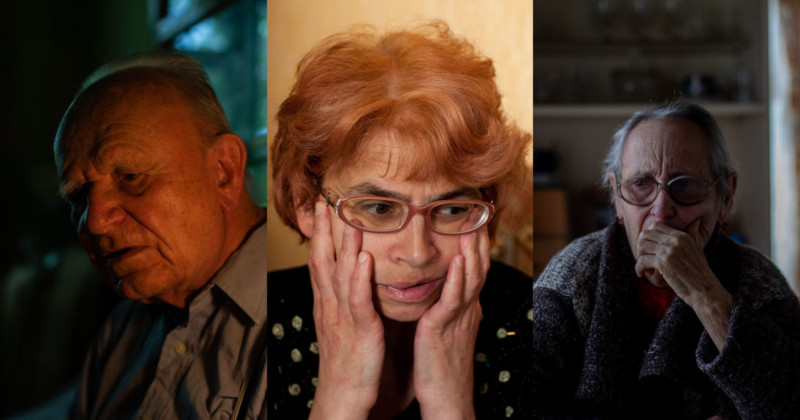
Conducting an interview and taking pictures at the same time may sound overwhelming but this is a usual practice in social documentary photography. After 8 years of talking while shooting, I now feel as if something is missing when I silently click a shutter button or interview someone without a camera in my hands. However, this type of work is full of challenges and pitfalls. Here is how I navigate this territory.

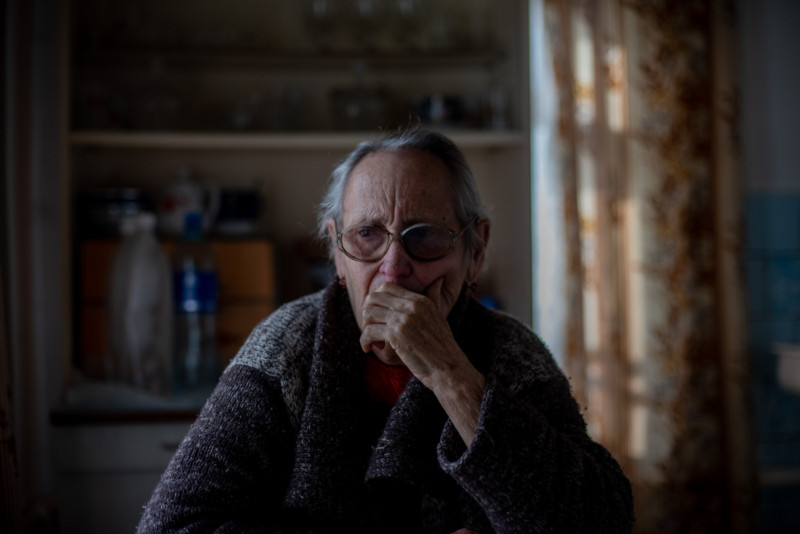

Breaking the Ice
Every interview is a journey, a story in its own right. It has a beginning, a climax, and a resolution. Acting in accordance with the arc of this story is key. Things inevitably go wrong when people try to bend the rules by forcing an interviewee headfirst into the depth of traumatic memories, screwing up the emotional peak or cutting short the ending.
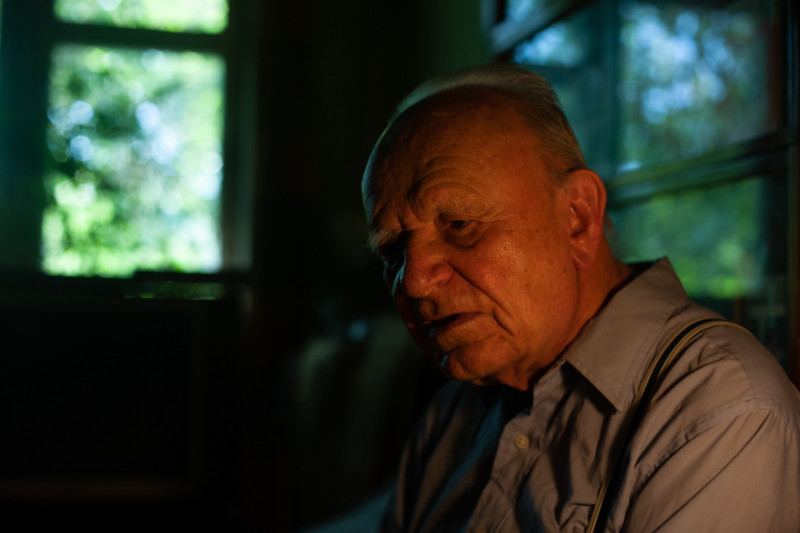
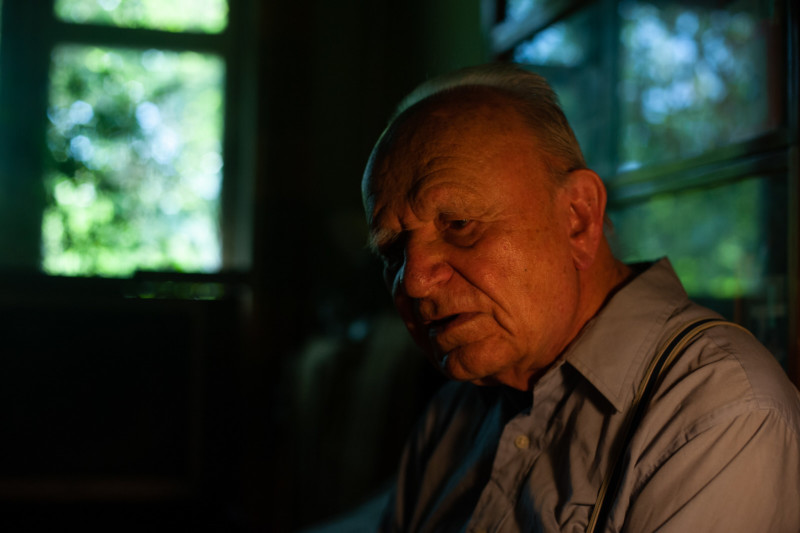

Even with the best intents in mind, even being wholeheartedly welcomed, I nevertheless break into someone’s private life when I enter a home as an interviewer with a camera. Usually I only have 40-50 minutes for a home visit, and I come in as a total stranger! By the moment an interview starts, we should trust each other, we can’t be strangers anymore.
How to build trust in such a limited time? First off, regardless of introductions provided by anyone who accompanies me, I always introduce myself again. I announce clearly who I am, what I am going to do, with what purpose, and for whom. Often I tell something about myself. Not the whole life story, but some details that will make me relatable, that have some points of intersection with the interviewee. For example, I can point out that I had the same wallpaper pattern in my living room when I was a kid or that my uncle worked in this town years ago.
I try to dive naturally into an interview by blending it with the initial small talk. I start chatting about simple matters like weather or the photographs on the walls, I never announce formally that we’re starting the interview, just the questions and answers get deeper and deeper as the conversation goes.
For a while, I’m not taking any pictures. I let the camera sit on my lap as we talk. Even when I start snapping, in the beginning, it’s only for a person to get used to the awkward sound and look of the camera. While we’re passing the shallow water of the story, there’s nothing to capture there anyway.
Eye Contact
Needless to say, eye contact is probably the most important ingredient of a sincere conversation. That’s the main tool for moderating the conversation, as well. Intensive eye contact confirms that whatever is being told is very important for me to hear. If I notice that the story is drifting away, I can easily show it without saying anything, just by moving my eyes away.
However, taking pictures requires breaking this eye contact, often at those very moments when it needs to be the tightest. Every time I bring the camera to my face I feel this inner pushback as if I’m doing something completely wrong.
Here is what’s important to remember in this regard: not every day people get asked about their life experience. In fact, it’s an extremely rare occasion. What usually happens when we are exploring our past? We’re reliving the distant events and disconnect from the current moment.
It’s only the interviewer who should be present in the moment. The interviewee is out there, on their own journey. If I did everything right, by the moment when we get to the peak of the interview, the person just doesn’t notice my camera anymore, it becomes invisible, non-existent. That’s the moment when I turn into a proverbial fly on the wall.

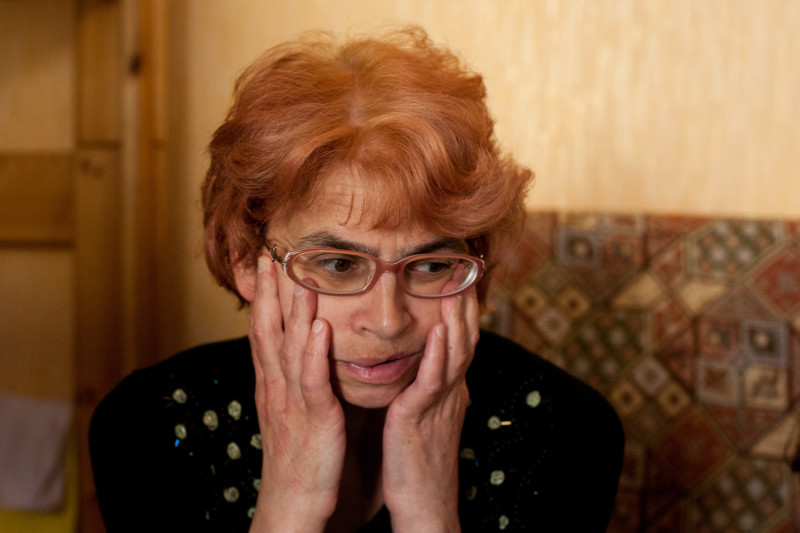

I always try to start taking pictures only when we’re deep enough into the conversation, and when I see that the gaze has changed, signaling me that the person doesn’t mind being photographed. That’s a gaze of someone who is not posing for a camera, who keeps being herself. If I grip a camera and nothing changes in the posture, intonations, and facial expression of the interviewee, then I’m good to start photographing.
What to Ask
An interview is always about the answers, not the questions. Of course, I prepare for each interview. I learn as much as I can beforehand about the biography and family situation, about the hardships and challenges. I write down a list of questions but I never pull it out. Arguably more important is how to ask than what to ask. It’s critical to go with the conversation and ask follow-up questions. Once I show that I’m interested in the story, once I’m curious enough about the details, the conversation flows without much effort.
I like to begin with quantitative questions and end with emotional ones. I can ask “how many years do you live in this house?” to put a person at ease, and end up asking “what do you feel when you wake up in this house?”, when I find it appropriate.
Variety of Shots
I can’t bring back from a home visit just a couple of similar frames. I’m supposed to get a variety of shots: middle, wide, details. How to get them when I’m only sitting and conducting an interview?
One of the most efficient ways that I’ve discovered is to wrap up the sitting part and ask for a “tour” around the house. Most often people would say – of course, go ahead and take pictures wherever you want. I would reply – please be so kind to be my guide. I want the host in the frame, not the kitchen. I use this “tour” as an excuse to make shots in a variety of lighting situations, with a variety of backgrounds, but I don’t point it out because I don’t want them to think for a second that they are supposed to pose for me.

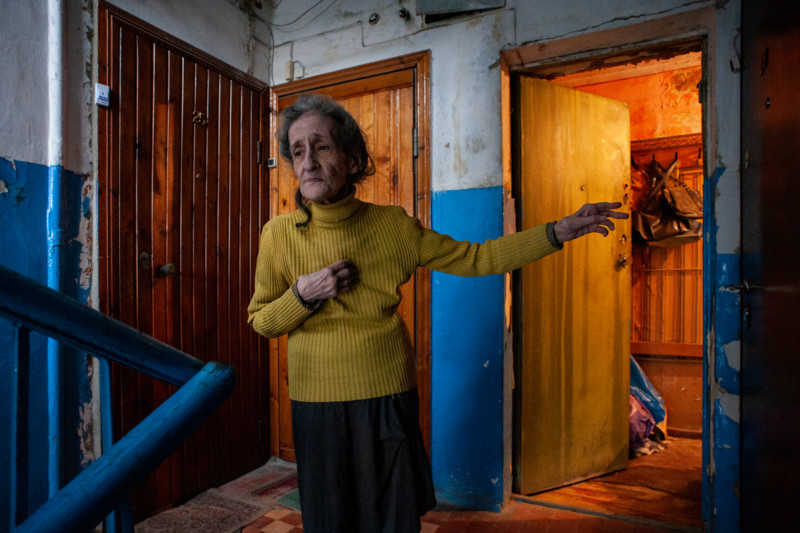

Of course, we keep talking during the “tour”, and quite often as we walk we get to some extremely important details of the life story which a person didn’t find appropriate to reveal while sitting.
Another way to get a variety of shots and at the same time to level up the interview is to ask about the most meaningful object or a photograph in the house. That’s what gets people to talk about their collection of cacti or their only photograph of the late dad, or the family library. These precious objects serve as a starting point for the most intimate stories.
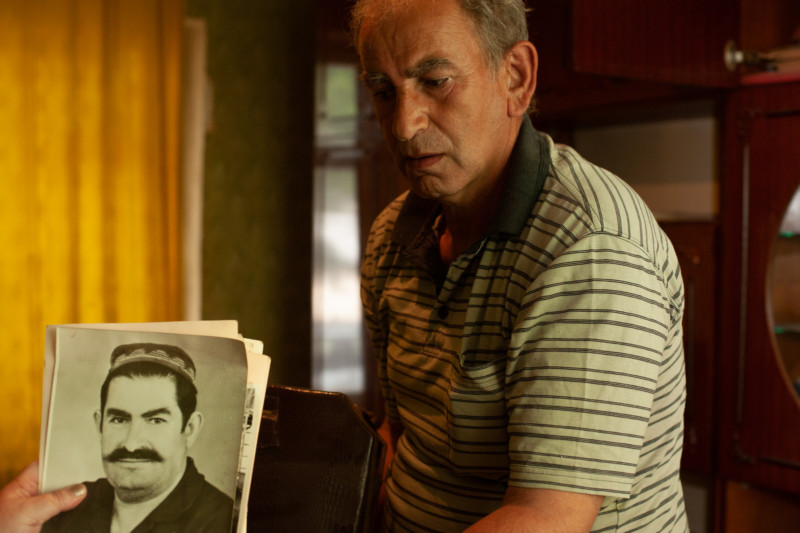
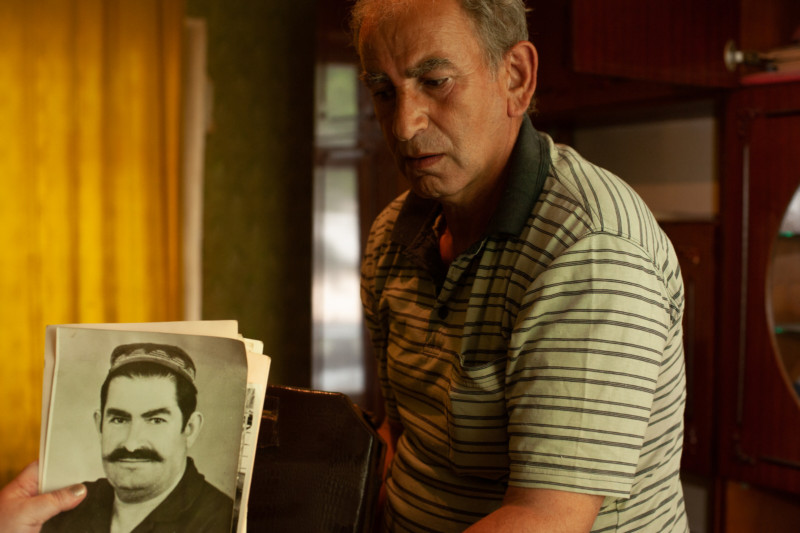

Ethics
There is a very delicate balance between getting a vivid story filled with emotions and bringing people to a breakdown by asking them about their traumatic past. I never know which question will trigger a breakdown. Nobody can know. If by any chance I get there, that’s a red flag for me. I find it inappropriate to exploit this condition. I stop taking pictures and try to fix the situation. I must put a person at ease in order to continue. At this moment I’m not an interviewer, I’m someone who can listen with compassion and bring comfort. As a famous documentary filmmaker Ken Burns said: “You ought to conduct an interview as if you’re going to bump into them again after the film is out”.
I deal with the memories, and I should be very careful about bringing them to light. Sometimes an interview reminds a therapy session, but I keep in mind that this therapy is unsought. The interview will be over, I’ll go on with my own life, and the person, in many cases absolutely lonely, will stay one on one with the memories.
It’s always a huge honor for me to feel the trust of someone telling painful things about themselves. When at the end of an interview I thank them, I do so in the most sincere way.
Technical Aspects
Camera
Photographing an interview puts some constraints on the way a photographer deals with the equipment. I use the first 5 minutes of small talk to make all the camera adjustments. I can afford to preview the pictures on the camera screen only before we get into a serious conversation. Even then, I just check briefly the histogram to make sure it’s not completely off. I have an automatic preview turned off on my camera, so the images don’t pop up on the screen on their own and don’t distract me. I make my eye focus on the composition and my mind on the conversation. I build a picture in my head before grabbing the camera, and only then do I quickly snap it. The less time I spend looking through a viewfinder the better for the rhythm and flow of the interview.
Lens
Very often I have to deal with the dark and dull light of Soviet apartments. For these situations I used to carry around two camera bodies with speedy prime lenses: Nikon D750 with 50/1.4 and Nikon D700 with 20/2.8. Nowadays I’m using an amazing Nikkon 24-70/2.8 lens with my D750. It’s bulky but it’s still more convenient than having two bodies hanging on me.
Notes
I don’t rely on my memory to remember all the stories I capture — sometimes I hear a dozen of them in one day. I use my phone to record sound throughout the interview. I don’t use these recordings for anything but writing my notes. I make a quick note after every single visit, on my way to the next one. Usually, I put down just a few keywords which will then remind me what to look for in the recording. I tried all kinds of ways to save these notes, from a paper notebook to Evernote app. Paper notes were hard to use while riding in the car on the bumpy roads. Evernote was a bit too complicated. I ended up using Google Keep for these quick notes.
Backup
Upon getting back to a hotel the first thing I do is make copies of all the files of the day, including the audio files. I copy them to the laptop and to the external hard drive. Additionally, I make Dropbox do its job of uploading all of it to the cloud. Normally I don’t consider myself a backup freak, but things change when I’m on an assignment in the opposite corner of the world.
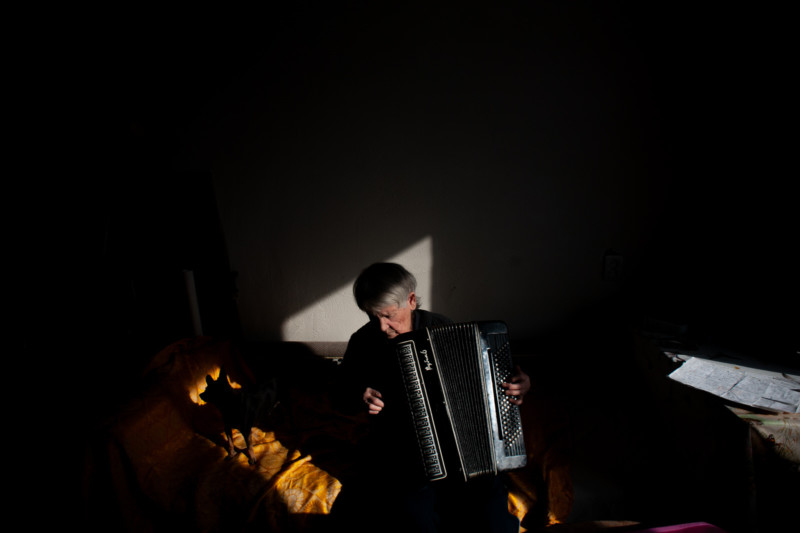
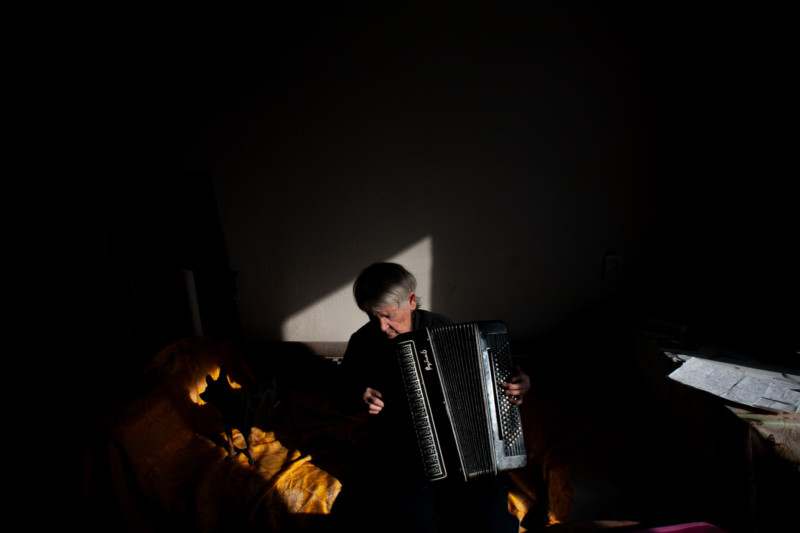

Clearing Mind
Once the files are saved in multiple places, I lay down on the floor and rest for a while in a “dead body pose”. That’s a necessary part of the workflow — a silent meditation that allows me to internalize all the stories I’ve heard and at the same time to separate myself from them. Without this separation, a quick burnout is inevitable.
About the author: Arik Shraga is a photojournalist and documentary photographer based near Jerusalem, Israel. The opinions expressed in this article are solely those of the author. You can find more of his work and connect with him through his website and LinkedIn.